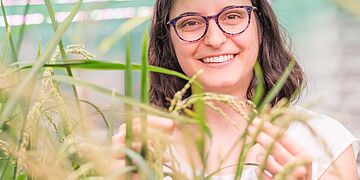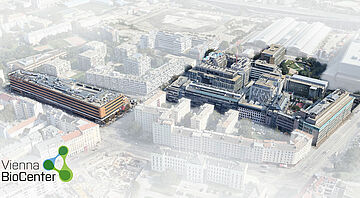Monitoring with self-sampling and PCR
COVID-19 RT-qPCR testing pipeline at the Vienna BioCenter
On 20 April 2020, the research institutes at the Vienna BioCenter started testing their employees for SARS-CoV-2 twice weekly on a voluntary basis. The initiative was launched by researchers at the IMP and IMBA, with dozens of scientists, technicians and administrative staff at the Vienna BioCenter involved in developing, setting up and running the assay.
Under the “Vienna COVID-19 Detection Initiative” (VCDI) and with support from the Vienna Science and Technology Fund (WWTF), the project was scaled up and extended to offer testing to university departments, companies, schools, nursing and retirement homes. By March 2021, roughly 88,000 samples had been analysed and 84 positive cases were detected. Comprehensive testing and contact tracing have turned the Vienna BioCenter into a safe space for its employees and allowed research activities to continue.
(3) Every morning, the matrix racks containing the code-labelled tubes are picked up by a member of the SARS-CoV-2 screening team and taken to the testing lab, a unit of the Vienna BioCenter Core Facilities which is equipped and staffed for automated sample processing.
(7) The following steps are performed under sterile conditions in a laminar flow hood. The de-capper automatically removes the screw caps from the matrix tubes and later re-applies them. It goes through an entire rack in just thirty seconds. Different cartridges are available for different tube models and can be rapidly adjusted.
(8) The tubes are now open, and a pipet robot (Integra VIAFLO) adds DTT which rapidly dissolves mucus and reduces the viscosity of the samples. After a short spin on the centrifuge, the pipet robot removes the supernatant and the remaining sediment containing the biological material is used for sample pooling.
(12) The plates are now moved to the thermo-cyclers. This is where RT-qPCR, the process at the heart of SARS-CoV-2 detection, takes place. Up to 45 cycles, each doubling the amount of viral RNA, are carried out. If a positive signal is detected, the respective pool is opened up and back-up samples are re-tested individually.
(14) Once the RT-qPCR assays are completed, the data are analysed and the results are imported into a database. The web-based COVID-19 testing database solution was developed in-house at the VBCF. It supports sample registration and tracking through all steps of the experimental pipeline, storage and approval of all test results, and an anonymous user administration.
Acknowledgements & credit
The ongoing testing-initiative was made possible by a joint effort of the Vienna BioCenter community. Development of the testing pipeline was led by Johannes Zuber, who together with Harald Scheuch, Robert Heinen, Marcus Dekens and many volunteers established all protocols and automated workflows. During the first months, tests were carried out and further optimised by the Molecular Biology Service of IMP, IMBA and GMI with great help from volunteers from numerous research groups. Johanna Trupke and her team took over in the fall of 2020. The database application at the core of administering the tests was developed by Thomas Micheler and the Strategic Information Management team at VBCF. We are also grateful to our colleagues in administration who chase up supplies, deal out the kits and keep us informed, and to our management for making it all possible.
Image 1: IMP, Images 2-15: L. Schedl / IMP.


















